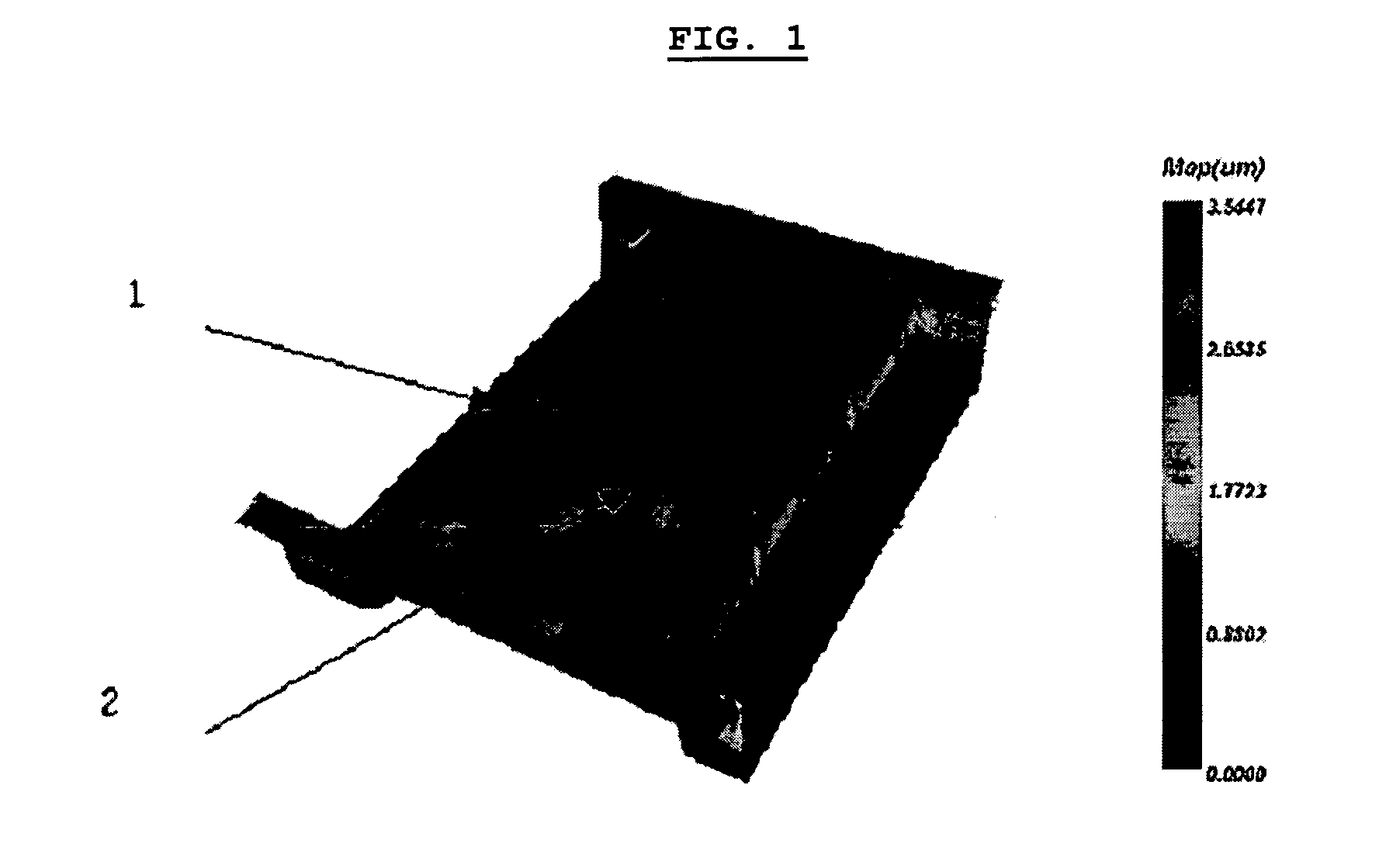Pixel-to-barrier-unevenness-controllable ink
a technology of ink and pixel, which is applied in the field of ink, can solve the problems of occlusion of ink-jet head nozzle, thinning of film, and relatively small amount of raw materials, and achieve the effects of reducing the amount of polymer binder, and reducing the amount of ink
- Summary
- Abstract
- Description
- Claims
- Application Information
AI Technical Summary
Benefits of technology
Problems solved by technology
Method used
Image
Examples
example 1
[0086]First, 80 wt % of tripropylene glycol diacrylate (viscosity: 15 cP) was dispersed with 5 wt % of BYK168 as a dispersing agent and 15 wt % of P.I. Red 254 as a coloring agent to form dispersion. To 33 wt % of the dispersion, 35 wt % of 1,6-hexanediol diacrylate (viscosity 9 cP) and 2 wt % of tripropylene glycol diacrylate (viscosity 15 cP) were added. Then, 15 wt % of trimethylolpropane triacrylate (viscosity 106 cP) and 9 wt % of dipentaerythritol hexaacrylate (viscosity 10000 cP or more) as crosslinking agents and 5 wt % of Irgacure369 (Ciba Geigy) as a photoinitiator were further added thereto. Finally, other additives, including KBM (a silicon-containing surfactant available from Shinetsu, Japan) and FC (a fluorine-containing surfactant available from DIC, Japan) were added thereto, each in an amount of less than 1 wt % to provide ink.
[0087]After filtering the ink through a filter having a pore size of 1 μm, the ink had a surface tension of 35 mN / m and a viscosity of 29 cP....
example 2
[0092]First, 80 wt % of tripropylene glycol diacrylate (viscosity: 15 cP) was dispersed with 5 wt % of BYK168 as a dispersing agent and 15 wt % of P.I. Green 36 as a coloring agent to form dispersion. To 45 wt % of the dispersion, tripropylene glycol diacrylate (viscosity 15 cP) was added to an amount of 70 wt % of the weight of the ink. Then, 5 wt % of trimethylolpropane triacrylate (viscosity 106 cP) and 4 wt % of dipentaerythritol hexaacrylate (viscosity 10000 cP or more) as crosslinking agents and 5 wt % of Irgacure369 (Ciba Geigy) as a photoinitiator were further added thereto. Finally, other additives, including a silicon-containing surfactant and a fluorine-containing surfactant were added thereto, each in an amount of less than 1 wt % to provide ink.
[0093]After filtering the ink through a filter having a pore size of 1 μm, the ink had a surface tension of 37 mN / m.
[0094]The ink was coated onto a glass via spin coating to form a film, and cured by UV irradiation, and heat trea...
PUM
| Property | Measurement | Unit |
|---|---|---|
| volumetric shrinkage | aaaaa | aaaaa |
| viscosity | aaaaa | aaaaa |
| viscosity | aaaaa | aaaaa |
Abstract
Description
Claims
Application Information
 Login to View More
Login to View More - R&D
- Intellectual Property
- Life Sciences
- Materials
- Tech Scout
- Unparalleled Data Quality
- Higher Quality Content
- 60% Fewer Hallucinations
Browse by: Latest US Patents, China's latest patents, Technical Efficacy Thesaurus, Application Domain, Technology Topic, Popular Technical Reports.
© 2025 PatSnap. All rights reserved.Legal|Privacy policy|Modern Slavery Act Transparency Statement|Sitemap|About US| Contact US: help@patsnap.com

